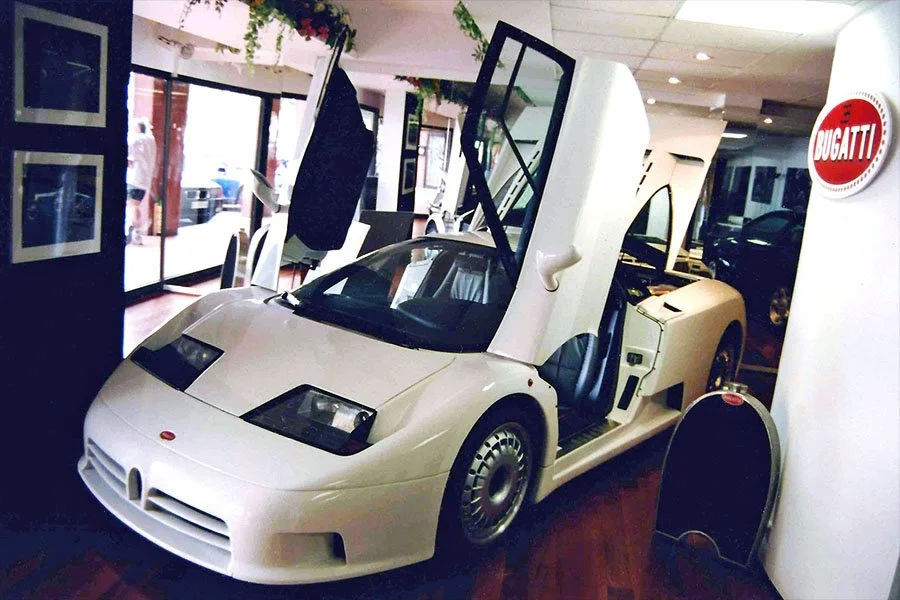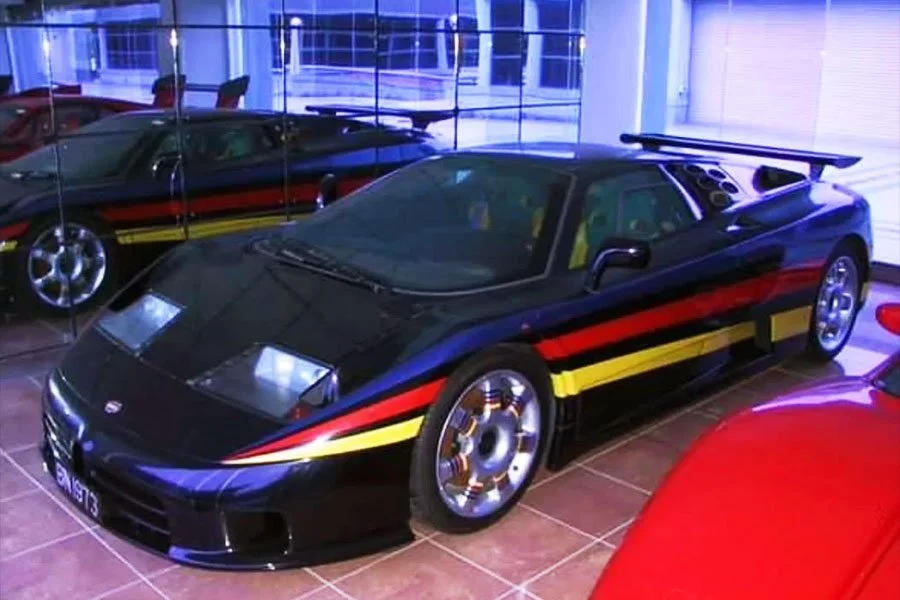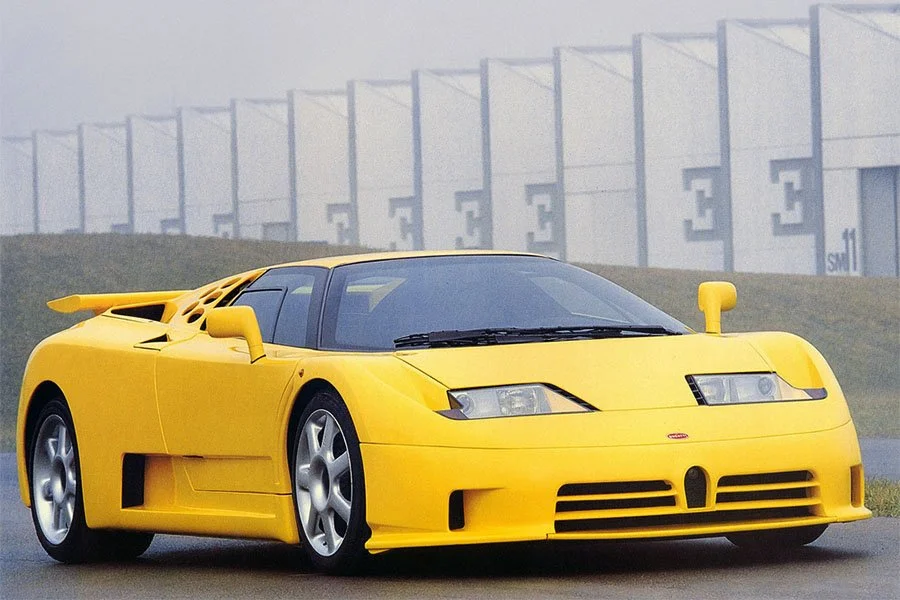Guide: Bugatti 18.4 Veyron - a Historical & Technical Appraisal
/BACKGROUND
In 1993, Ferdinand Piech became Chairman of the Volkswagen Group. Volkswagen had already taken control of Audi in 1965 and SEAT in 1986. In 1994, soon after Piech’s arrival, the Volkswagen Group also purchased a majority stake in Skoda.
Piech was a grandson of Ferdinand Porsche and started his career at the family firm in 1963. He was a key player in Porsche’s move to the pinnacle of sports car racing which culminated with the legendary 917 programme.
In 1972, Piech moved to Audi where he was most notably responsible for establishing the firm as a rival to BMW and Mercedes. He also initiated the development of the iconic four-wheel drive Quattro.
With his love for high performance machinery, racing and automotive history, Piech oversaw the Volkswagen Group’s purchase of three famous firms in 1998: Bentley, Bugatti and Lamborghini.
The Bugatti marque was earmarked for an 18 cylinder engine Piech had sketched out a year earlier.
Prior to Volkswagen’s acquisition of Bugatti in May 1998, the firm had been revived by Italian industrialist Romano Artioli.
Having acquired the Bugatti naming rights in 1987, Artioli bankrolled a state-of-the-art factory in his homeland and developed the EB110 supercar from scratch.
Unfortunately, in the doom and gloom of the early nineties recession, few buyers were found and Artioli’s dream came to an end in 1995 when Bugatti filed for bankruptcy.
Under Volkswagen’s ownership, Ettore Bugatti’s old guest house in Molsheim was purchased and refurbished to serve as the company’s headquarters. Work on a brand new factory next to the Chateau began in 2000 and was completed in 2005.
Within a few months of Volkswagen’s purchase of Bugatti, a series of concept cars began to emerge.
First to arrive was the EB 118 unveiled at Paris Motor Show in September 1998. This grand two-door Coupe was followed by four door EB 218 at the Geneva Motor Show in March 1999.
Both the EB 118 and EB 218 were based on the old EB 112 that was about to go into production when Bugatti went out of business.
Neither would make it beyond the concept stage as Bugatti’s new owners began work on a brand new high performance two-seater.
The resultant 18.3 Chiron was unveiled at the Frankfurt Motor Show in September 1999. Like the EB 112, EB 118 and EB 218, the 18.3 Chiron was styled at Ital Design albeit overseen by Volkswagen’s chief designer, Harmut Warkuss.
With its exciting W18 engine and spectacular appearance, the four-wheel drive Chiron caused a sensation.
However, an even more impressive, purely in-house design, was also nearing completion.
The stunning 18.4 Veyron made its debut at the Tokyo Motor Show in October 1999. It was named in honour of Bugatti development engineer and racing driver, Pierre Veyron, who took victory at the Le Mans 24 Hours in 1939 driving the works Type 57S Tank with Jean-Pierre Wimille.
ENGINE / TRANSMISSION
As per the Chiron, the Veyron was powered by a Volkswagen-derived W18 engine that comprised three six cylinder banks with a 60° offset between them. A curiously lopsided looking power unit, it utilised two cylinder banks in a conventional V with the third lying horizontally.
Each bank featured dual overhead camshafts with four valves per cylinder and direct fuel-injection from a single metering unit.
The heads, combustion chamber valves, injectors and pistons were all sourced from series production Volkswagen engines.
Displacement was 6255cc thanks to a bore and stroke of 76.5mm and 75.6mm respectively.
Compression was 11.5:1 and, all told, the 315kg engine produced 555bhp at 6800rpm. Its torque rating was a mammoth 479lb-ft at 4000rpm.
Transmission was through a five-speed manual gearbox and Haldex LSC full-time four-wheel drive system.
Otherwise, few technical details were published.
BODYWORK
Visually, the Veyron adopted several styling elements that had been seen on the Chiron such as its reclined horseshoe grille, triple Xenon headlights and distinctive V-banked nose.
The new car was a big improvement in every respect and ultimately required very few changes before production began.
The front of the car was home to a pair of massive radiator intakes either side of the licence plate housing. Subtly creased front fenders were more neatly integrated than on the Chiron.
From the cockpit back, the Veyron was completely new. The rear three quarter windows were deleted, aluminium cooling scoops were added behind the roof and enormous intake ducts were located behind the doors.
As per the front of the car, the soft, tightly clipped tail had a much shorter overhang than the Chiron. The tail fascia was home to four traditional circular lights and a single square exhaust.
To finish, the Veyron was painted two-tone blue and the six twin-spoke wheels were chrome plated.
INTERIOR
The interior was trimmed with a mix of tan alcantara and leather with matching carpet.
Directly behind the three spoke steering wheel was a five gauge instrument binnacle that housed all the vital information in a mix of digital and analogue readouts.
Supplementary controls were housed on an alloy centre console that swept down to shroud the gear lever.
WEIGHT / PERFORMANCE
Bugatti quoted estimated performance figures of 211mph and 0-62mph in 4.2 seconds.
Weight was circa 1700kg.
SUBSEQUENT HISTORY
By the time the Veyron had been unveiled, engineers were already experiencing problems with the W18 engine. Before the end of 1999, it had been dropped on weight grounds and because of incurable reliability issues that stemmed from such an oversized bore.
Instead, attention turned to a more compact and lighter four bank W16 engine with quad turbochargers.
The 16.4 Veyron concept debuted at the Detroit Motor Show in January 2000 and was given the green light for production in 2001.
The first roadworthy prototype was up and running in August 2003 and Veyron production finally started in September 2005.
Text copyright: Supercar Nostalgia
Photo copyright: Bugatti - https://www.bugatti.com


































